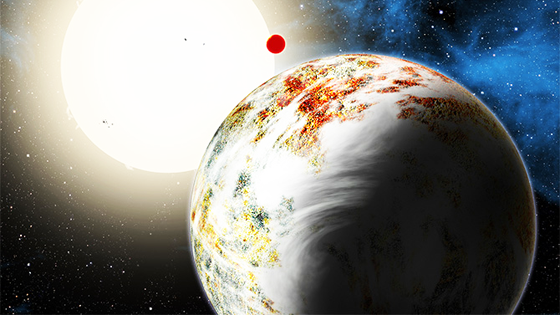Astronomers discover “MEGA EARTH” which SHOULDN’T EXIST
Fuckin’ astronomers DON’T KNOW SHIT. But don’t tell them that. Oh, no! One minute they’re decrying my idea that Mars is secretly terraformed, and the Bill Gates-led Illuminati is living on it. LIKE THEY KNOW EVERYTHING. The next minute the fucking ding dongs are announcing that they’ve discovered a Mega Earth. Which shouldn’t exist. according to previously understood Astrono-Theory.
Meet “mega-Earth,” a souped-up, all-solid planet that, according to theory, should not exist.
NASA’s Kepler telescope was launched to find other planets just like Earth — and now, scientists think they may have found not just one, but three! Trace shows us where they are in the solar system and why the discovery is so important.
First spotted by NASA’s Kepler space telescope, the planet is about 2.3 times larger than Earth. Computer models showed planets that big would be more like Neptune or the other gas planets of the outer solar system because they would have the gravitational heft and time to collect vast amounts of hydrogen and helium from their primordial cradles.
But follow-up observations of the planet, designated as Kepler-10c, show it has 17 times as much mass as Earth, meaning it must be filled with rock and other materials much heavier than hydrogen and helium.
“Kepler-10c is a big problem for the theory,” astronomer Dimitar Sasselov, director of the Harvard Origins of Life Initiative, told Discovery News. “It’s nice that we have a solid piece of evidence and measurements for it because that gives motivations to the theorists to improve the theory,” he said.
Scientists aren’t sure how mega-Earths, or their diminutive cousins, super-Earths, form, nor why our solar system has nothing in between the largest rocky planet, Earth, and the smallest gas giant, Neptune.
“There was enough material for a super-Earth or mega-Earth to form, so it’s not that the building materials weren’t there. We think that the reason it didn’t form — or that in some planetary systems they don’t form — is because the conditions don’t work out to form a bigger rocky planet than the Earth. They don’t get their act together on time and you end up with a bunch of small planets which are rocky and a completely different bunch of bigger planets, which are the gas planets,” Sasselov said.
“We see that the rest of the galaxy’s planetary systems have members in all different shapes and forms,” he added “But how unique is the solar system, we don’t know the answer to this yet. [Discovery]




